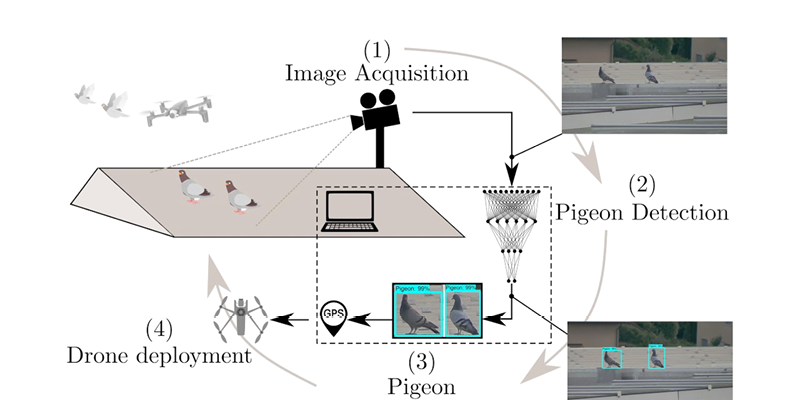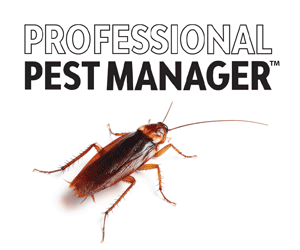The latest research from Europe suggests that developing a fully automated bird-scaring drone system may be achievable in just a few years.
We all know that pigeons are a nuisance and a health hazard in terms of the diseases they can transmit and the mess their droppings make. Several control strategies exist, such as trapping, exclusion and falconry, but these methods are sometimes ineffective, harmful to the birds, or rely heavily on human operation. A study published by a team of Swiss researchers proposes a system capable of autonomously detecting pigeons on building roofs and harmlessly chasing them away using a drone.
Over the past ten years, several research teams have looked at ways to deploy drones for bird control. While there have been some interesting and relatively successful trials, currently no fully autonomous system exists. At least not one that can undertake bird detection, position estimation, and drone deployment to the corresponding position in a way that can be used in urban environments without causing disturbance to humans.
The team from the Swiss Federal Institute of Technology took an approach inspired by nature. In the wild, raptors keep pigeon numbers in check but in the urban landscape, drones can step in to fill the predator role. “The effectiveness of natural predators has inspired the use of artificial predators, such as drones,” they write.
The aim of the study, published in early 2022 in the open-access journey IEEE Access, was to develop a machine learning system that provided two services: firstly, monitoring an area for pigeon activity and secondly, deploying a drone to fly to an area of activity, act as a deterrent, then return back to base. All without human assistance.
To test their system, the researchers installed a weatherproof pan-tilt-zoom video camera on the roof of the EPFL SwissTech Convention Center. The building has a significant pigeon problem, with large numbers of birds occupying the roof and causing a hazard with their droppings. The video camera detected the presence and position of pigeons in real time.
After studying the movements of the birds for three weeks, the researchers then introduced a quadcopter (drone). Over a period of five days, whenever the camera spotted pigeons on the roof, it relayed their location to the drone, which flew directly to the area of activity. The drone hovered in place, chasing the birds away, before returning to base. Over the five-day period, the drone was automatically deployed a total of 55 times.

Overall the system was deemed a success; without the presence of the drone, the pigeon flocks would spend anywhere up to two and a half hours loitering on the rooftop. The introduction of the drone cut this time down to just a couple of minutes. The amount of time that pigeons stayed on the roof, and the number that landed there in the first place, were both significantly reduced.
One successful aspect of the operation was the fact that the drone was designed to use as little battery power as possible. Rather than using energy to aerially survey and detect pigeons, the stationary, high-resolution camera did most of the hard work. When the pigeons were spotted, the drone was dispatched to the exact spot, spending a minimal amount of time in the air.
However, the researchers noted several shortcomings in the autonomous pigeon detection system. The detection system was subject to recording false positives, such as spotting metal objects on the roof and confusing them for pigeons while also failing to detect partially-occluded pigeons, when birds were hidden from view by other birds in front of them.
Also, the distance at which pigeons perceived the drone as a threat varied greatly. Whilst larger flocks were often scared simply by the drone taking off at a distance of 40-60 metres away, smaller groups of birds often let the drone come close, to within a few meters.
A bigger issue is the long-term viability of such a system, given that pigeons are known to become habituated to deterrent measures such as visual scarers and audio repellents. As the drone poses no threat to their health, it is certainly possible that the bird-chasing effect may be short lived.
The researchers believe that the goal of developing a fully autonomous bird detection and chasing system might be achieved by gaining a greater understanding of pigeon behaviour and how they interact with their wider environment.
Further reading: Schiano, Fabrizio & Natter, Dominik & Zambrano, Davide & Floreano, Dario. (2021). Autonomous Detection and Deterrence of Pigeons on Buildings by Drones. IEEE Access. PP. 1-1. 10.1109/ACCESs.2021.3137031.



